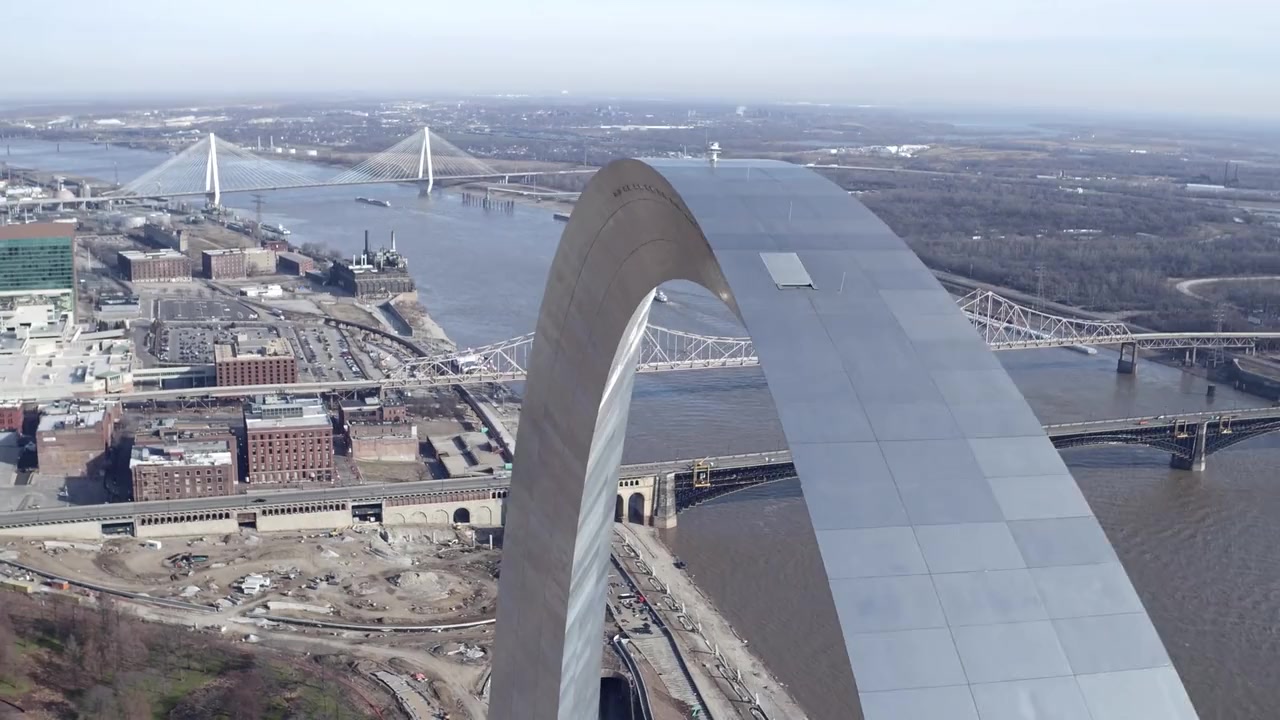
- Year: 2016
- Released: 08 Oct 2016
- Country: Finland, United States
- Adwords: N/A
- IMDb: https://www.imdb.com/title/tt5657112/
- Rotten Tomatoes: https://www.rottentomatoes.com/m/eero_saarinen_the_architect_who_saw_the_future
- Metacritics:
- Available in: 720p, 1080p,
- Language: English
- MPA Rating: G
- Genre: Documentary, Biography
- Runtime: 70 min
- Writer: N/A
- Director: Peter Rosen
- Cast: Eric Saarinen, Jayne Merkel, Paul Goldberger
- Keywords:
 | 7.3/10 |
Eero Saarinen: The Architect Who Saw the Future Storyline
Explore the life of Finnish-American modernist architectural giant Eero Saarinen (1910-1961), whose visionary buildings include National Historic Landmarks such as St. Louis’ iconic Gateway Arch and the General Motors Technical Center in Michigan. Saarinen also designed New York’s TWA Flight Center at JFK International Airport, Yale University’s Ingalls Rink and Morse and Stiles Colleges, Virginia’s Dulles Airport, and modernist pedestal furniture like the Tulip chair. Travel with his son, director of photography Eric Saarinen, as he visits the sites of his father’s work on a cathartic journey, shot in 6K with the latest in drone technology that showcases the architect’s body of timeless work for the first time. Eero’s sudden death at age 51 cut short one of the most influential careers in American architecture. Today, Saarinen’s work stands apart and continues to inspire, especially amongst renewed interest in 20th-century architects and artists who exploded the comfortable constraints of the past to create a robust and daring American aesthetic. Produced and Directed by Peter Rosen. 68 minutes, 2016. Premiering December 2016 on PBS as part of the American Masters series.
Eero Saarinen: The Architect Who Saw the Future Photos



Eero Saarinen: The Architect Who Saw the Future Torrents Download
| 720p | web | 635.05 MB | magnet:?xt=urn:btih:8ACB6A83356D1A2EBE43F4CC67CE79F640B1D8B9 | |
| 1080p | web | 1.15 GB | magnet:?xt=urn:btih:68B19B26AA329A231892AE4A412D137043FE1D3C |
Eero Saarinen: The Architect Who Saw the Future Subtitles Download
Eero Saarinen: The Architect Who Saw the Future Movie Reviews
Very Insightful Documentary
This documentary on the acclaimed Finnish-American architect Eero Saarinen is part of the PBS American Masters series.
Eero’s son Eric Saarinen, who is an accomplished cinematographer himself, and Director of Photography in this film, narrates part of the doc, often appearing in it as he photographs some of the brilliant works of his father, and explains some of the history behind them. He calls the movie a cathartic experience and a chance to forgive his father for being obsessed with his work, often an absentee parent, and one whom he describes as abandoning Eric, his sister Susan, and his mother Lilian.
The movie clearly shows us the genius of Eero Saarinen’s architectural design and structure, his sweeping and futuristic structures both inside and out, and how he tried to emotionally connect his work to the people that would view them. These works would include the Gateway Arch, in St.Louis, Missouri, the TWA terminal at JFK Airport in NYC, the Dulles Airport terminal in Washington, D.C., and such corporate headquarters’ complexes and buildings for General Motors, Deere & Company, and CBS.
Some of Eero Saarinen’s masterworks remained uncompleted at the time of his death in 1961, at the young age of 51 from a brain tumor. However, his second wife Aline, who was an art and architectural critic for the New York Times, insured that his projects would be completed the way he desired them to be.
All in all, I thought this documentary offered a very insightful look into the life and mind of a brilliant and bold architect, whose influence remains strong to this very day.
Stunning in 6K
I saw this in a 6K high-def on a big screen during Palm Springs’ Modernism Week in 2017. There is a good amount of family history (Eero’s father was also a great architect) that gives this film more depth than a typical documentary. Eero’s son Eric was director of photography and his sensitive portrayals of Saarinen’s buildings made with modern drone cameras is as close to “dancing with architecture” as you’re going to find. A must for architecture buffs. The only quibble I have is with the narration, it is a little heavy-handed at times.
Amazing Documentary!
Peter Rosen Productions and PBS have created a moving documentary tribute to one the great minds of our modern world. Having seen many of the buildings in the film in real life or in photos from college study, we were deeply stirred by the genius of the designs, the depth of the risks involved with unconventional architecture and Mr. Saarinen’s future-minded construction.
Spending time at the St. Louis Arch was a favorite pastime while living in Missouri. Touching the giant chrome and steel surface at ground level, one can feel the hum of the wind, the vibrations of the earth, and the static electricity connecting the ground with the metal skin.
His premature death is a sad footnote to his legacy, having never seen in reality, many of the finished products of his labors. His wife took it on to see things through, and we commend her for that. Next to every great man is a great woman, in support. Thankfully.



